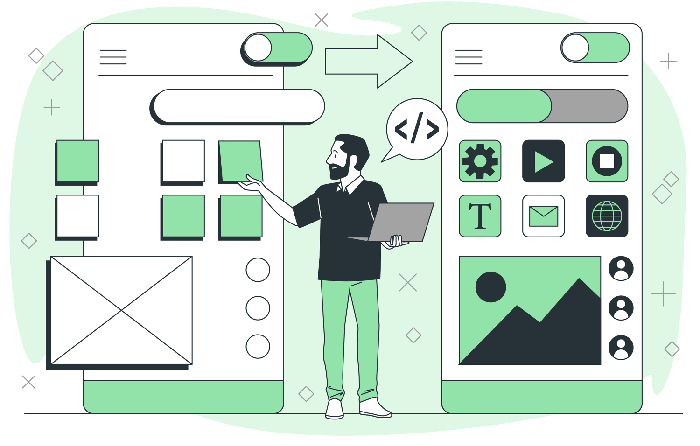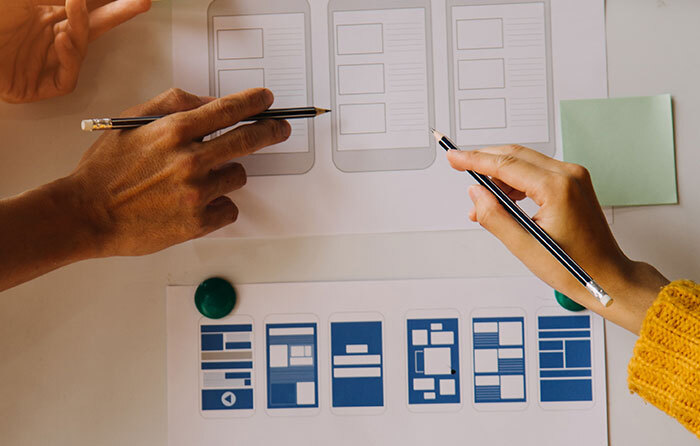From User Research to Prototype: A Beginner's Guide to the Design Thinking Process

So you’ve heard the buzz about Design Thinking, a human-centered approach to problem-solving used to create innovative solutions. But where do you even begin? This blog post is your roadmap, guiding you through the design thinking process, from understanding user needs to crafting a testable prototype – all in beginner-friendly steps.
Design Thinking 101: Empathy is the Driving Force
Design Thinking isn’t about you, the designer, it’s about the users. Imagine yourself putting on a pair of empathy glasses, seeing the world through the eyes of the people you’re designing for. This core principle ensures your solutions truly address their needs and challenges.
Step 1: Empathize – Dive Deep into User Needs
This is where you gather information about your target audience. Here are some ways to get started:
- User Interviews: Schedule conversations with potential users to understand their experiences, pain points, and goals.
- Surveys and Questionnaires: Reach a wider audience by creating surveys or questionnaires to gather quantitative data.
- User Observation: Watch how users interact with existing products or navigate similar situations. Take note of their frustrations and successes.
Step 2: Define – Frame the Problem as a User Needs Statement
Once you’ve empathized with your users, it’s time to define the core problem you’ll be tackling. Here’s the trick: frame it as a user needs statement.
For example, instead of saying “Our website is outdated,” rephrase it as “Users need a more user-friendly website to find information quickly and easily.”
Step 3: Ideate – Brainstorm Like There's No Tomorrow!
Now comes the fun part – unleashing your creativity! Here are some brainstorming techniques to generate a multitude of solutions:
- Brainstorming Sessions: Gather a diverse group of people and encourage wild ideas. No suggestion is too crazy at this stage!
- Mind Mapping: Visually organize your ideas and explore connections between them.
- Crazy 8s: Set a timer for 8 minutes and sketch 8 different ideas to jumpstart your creative flow.
Step 4: Prototype – Build a Quick and Dirty Model
Don’t get hung up on perfection! A prototype is a basic, low-fidelity model of your idea. The goal is to test core functionalities and gather user feedback early on.
Here are some prototyping tools for beginners:
- Pen and Paper Sketches: Simple sketches can effectively communicate your ideas.
- Digital Wireframing Tools: Free online tools like Figma or Miro allow you to create low-fidelity digital prototypes.
- Cardboard or Paper Prototypes: Get crafty and build a basic model to simulate user interactions.
Step 5: Test – Gather Feedback and Iterate
The magic happens here! Present your prototype to a group of users and observe their interactions. Their feedback is crucial for refining your ideas.
Here are some things to pay attention to:
- Usability: Can users easily navigate your prototype and achieve their goals?
- Desirability: Do users find your solution appealing and engaging?
- Feasibility: Can your solution be realistically developed and implemented?
Remember, Design Thinking is Iterative
The design thinking process is cyclical, not linear. Based on user feedback, you’ll likely need to revisit previous steps and iterate on your design. This continuous process of testing and refinement ensures you create solutions that truly meet user needs.
Embrace the Journey!
Design thinking can be a powerful tool for tackling complex problems and creating innovative solutions. By following these steps and keeping the user at the forefront, you’ll be well on your way to becoming a design thinking pro. So, grab your empathy glasses, unleash your creativity, and get ready to prototype your way to success!


